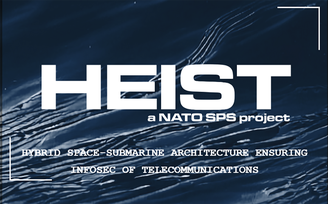The Belize-flagged cargo ship Rubymar had its crew evacuated after being hit by missiles from Yemeni Houthi rebels and dragged its anchor along the ocean floor before sinking. Along the way, the piece of iron cut three fiber optic cables at the bottom of the Red Sea, disrupting a quarter of internet traffic between Europe and Asia.
In addition to the Internet, there are concerns about the vulnerability of this system. Transmits defense communications and more than $10 trillion in daily financial transactionsThe North Atlantic Treaty Organization (NATO) plans to develop a hybrid network to prevent such vulnerabilities caused by Rubymar.
The aim is to ensure continuous data flow by combining submarine cables and satellite communication. The project, which has a budget of US$2.5 million (R$15.3 million), is an international collaboration between NATO allies and partners such as the United States, Iceland, Sweden and Switzerland.
Where does the world’s internet come from?
Although many people think that the internet we receive in our homes comes via satellites, this type of transmission accounts for a maximum of 5% of global traffic and is limited to remote areas where cables cannot reach. Actually in between Between 95 percent and 99 percent of Internet transmissions occur over submarine fiber optic cables.
The thin (about the width of a sausage) but extremely long fiberglass ribbons stretch about 1.2 million km around the planet, according to the US Institute of Electrical and Electronics Engineers (IEEE). Currently, 500 to 600 of these cables cross ocean floors worldwide.
Although comprehensive, this system is extremely fragile because each cable can potentially become a “choke point” (bottleneck), because it is a critical and vulnerable point within the global internet structure. In other words, if such a cable is damaged or cut, it can even cause digital isolation in certain parts of the world.
Why does NATO want an alternative internet in space?

Although considered highly efficient and fast (when operational), submarine cables became prone to problems such as attacks, accidents, and other mishaps. According to the Center for Strategic and International Studies (CSIS), between 100 and 150 cables are cut annually, mostly by dragging fishing equipment or anchors.
Additionally, the risk of sabotage increases. This event may have occurred in November 2024, when two submarine cables were mysteriously cut in the Baltic Sea in Northern Europe. While there was no formal accusation, there were veiled claims that the alleged incident was Russia’s retaliation for European support for Ukraine. Russian officials described these insinuations as “pretty ridiculous.”
“Think of Iceland. Iceland has a lot of financial services, a lot of cloud computing, and it’s connected to Europe and North America by four cables. If those four cables were destroyed or compromised, Iceland will be completely isolated from the worldNicolò Boschetti, a PhD student at Cornell University who worked on the project, told IEEE Spectrum:
When will NATO HEIST start operating?

The project, whose long name is “Hybrid space-submarine architecture that provides telecommunication information security” and the strange abbreviation HEIST in English, is being developed by teams from Cornell, Johns Hopkins, Bifröst and Swedish Defense universities, as well as the Blekinge Institute. Technology, ETH Zurich, the Royal Swedish Navy, the Icelandic government and several private companies.
Starlink, a satellite internet service developed by SpaceX that already provides numerous space-based internet services, was initially considered. However, it was not deemed appropriate by the managers to place this important and sensitive global area under the supervision of a single person (Elon Musk).
If everything goes as planned A functional prototype of the system can be delivered within two years, but some teams are promising to test equipment as early as 2025. “We’re putting the pieces of the puzzle together and trying to create this huge new ecosystem,” Greg Falco, NATO’s HEIST national director, told the Cornell Chronicle.
What do you think about the possibility of an alternative internet in space? Share the article on your social networks and comment with your friends. Until later!
Source: Tec Mundo
I am a passionate and hardworking journalist with an eye for detail. I specialize in the field of news reporting, and have been writing for Gadget Onus, a renowned online news site, since 2019. As the author of their Hot News section, I’m proud to be at the forefront of today’s headlines and current affairs.











